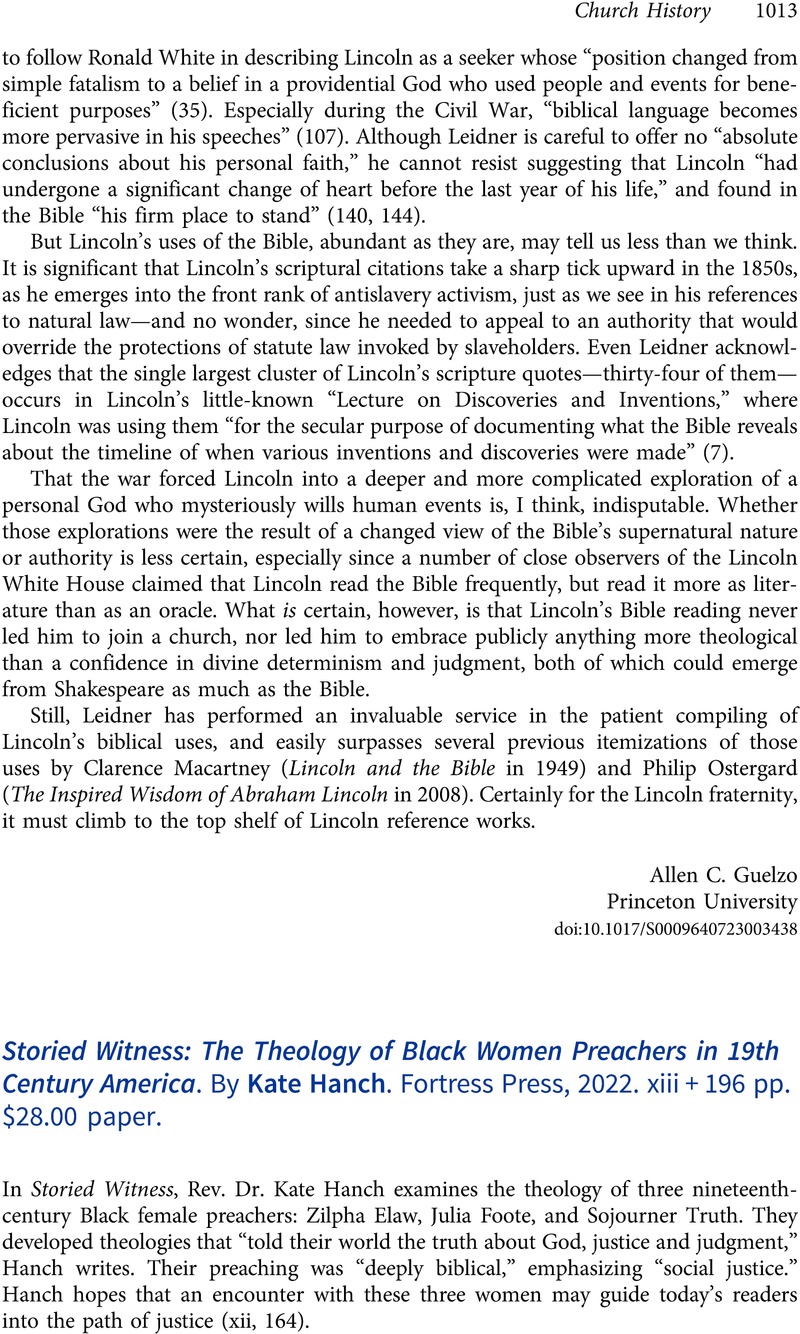No CrossRef data available.
Article contents
Storied Witness: The Theology of Black Women Preachers in 19th Century America. By Kate Hanch. Fortress Press, 2022. xiii + 196 pp. $28.00 paper.
Review products
Storied Witness: The Theology of Black Women Preachers in 19th Century America. By Kate Hanch. Fortress Press, 2022. xiii + 196 pp. $28.00 paper.
Published online by Cambridge University Press: 19 March 2024
Abstract
An abstract is not available for this content so a preview has been provided. Please use the Get access link above for information on how to access this content.

- Type
- Book Reviews and Notes
- Information
- Copyright
- Copyright © The Author(s), 2024. Published by Cambridge University Press on behalf of American Society of Church History


